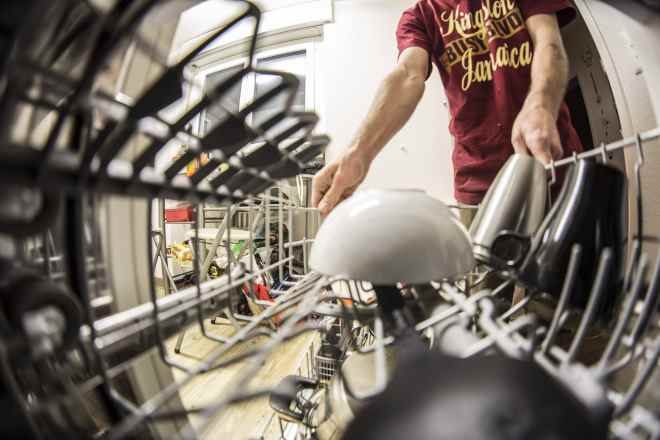A Calm Setting for Focused Study
Many users find that virtual lessons offer flexible scheduling, access to various learning materials, and a quiet space at home to focus on study. Observers note that clear explanations, structured sessions, and interactive exercises help learners engage with the content in a manageable way. These online sessions can suit different routines, from short daily lessons to longer study blocks during weekends or holidays.

A Calm Setting for Focused Study
The shift toward remote learning has highlighted the importance of creating optimal study environments within our homes. Whether you’re a student attending virtual classes or an adult pursuing professional development, the space where you learn significantly impacts your ability to focus, comprehend, and retain information. Understanding how to transform any area of your home into an effective learning sanctuary can dramatically improve your educational outcomes.
How Does Flexible Scheduling Fit Into Daily Routines and Commitments?
One of the greatest advantages of home-based learning is the ability to adapt study sessions around existing responsibilities. Unlike traditional classroom settings with fixed schedules, learning from home allows you to identify your peak concentration hours and plan accordingly. Morning learners can tackle complex subjects before the day’s distractions begin, while evening learners can dedicate quiet nighttime hours to focused study.
This adaptability extends beyond just timing. Family obligations, work commitments, and personal responsibilities can all be accommodated when you have control over your learning schedule. Parents can study during school hours, working professionals can learn during lunch breaks or after hours, and students can balance multiple subjects according to their energy levels throughout the day.
What Makes Interactive Learning Through Exercises Engaging for Learners?
Engaging with educational content through hands-on activities transforms passive consumption into active participation. Interactive exercises stimulate multiple learning pathways simultaneously, helping information stick more effectively than traditional reading or listening alone. These activities might include virtual simulations, problem-solving scenarios, collaborative projects, or multimedia presentations that require active input from learners.
The beauty of interactive learning lies in its ability to provide immediate feedback. When learners can test their understanding through quizzes, practice problems, or discussion forums, they quickly identify areas that need additional attention. This real-time assessment prevents the accumulation of knowledge gaps that might otherwise go unnoticed until formal testing.
Why Is a Supportive Environment Essential for Quiet Home Study?
The physical environment where learning takes place directly influences cognitive performance. A well-organized, quiet space signals to the brain that it’s time to focus, creating a mental association between the location and productive study habits. This supportive environment goes beyond just silence – it encompasses proper lighting, comfortable seating, organized materials, and minimal visual distractions.
Temperature control, air quality, and ergonomic considerations also contribute to a supportive learning environment. When physical discomfort is eliminated, mental resources can be fully dedicated to absorbing and processing information. The consistency of studying in the same well-prepared space helps establish routines that naturally promote deeper concentration and more effective learning sessions.
Creating Your Ideal Study Space
Establishing an effective home study area requires thoughtful consideration of both practical and psychological factors. Choose a location that can remain relatively undisturbed during your designated learning hours. This might be a dedicated home office, a corner of a bedroom, or even a well-organized section of the living room – the key is consistency and minimal interruptions.
Invest in proper lighting to reduce eye strain and maintain alertness. Natural light is ideal when available, but adjustable desk lamps can provide focused illumination for evening study sessions. Keep necessary supplies within easy reach to avoid disrupting concentration with frequent searches for materials. A clean, organized space promotes mental clarity and reduces the cognitive load of managing clutter while trying to focus on learning objectives.
Technology Integration for Enhanced Learning
Modern learning environments benefit significantly from thoughtful technology integration. High-speed internet connectivity ensures smooth access to online resources, video conferences, and interactive platforms. A reliable computer or tablet becomes the gateway to vast educational resources, while noise-canceling headphones can create an audio bubble of concentration even in busy households.
Digital organization tools help manage assignments, schedules, and resources efficiently. Cloud storage solutions ensure that important materials are accessible from any device, while productivity apps can help track progress and maintain motivation. The key is selecting technology that enhances rather than distracts from the learning process.
Successful home-based learning requires more than just good intentions – it demands the creation of an environment that naturally promotes focus, engagement, and retention. By combining flexible scheduling with interactive learning approaches in a supportive physical space, learners can achieve educational goals that might have seemed challenging in traditional settings. The investment in creating this calm, focused environment pays dividends in improved comprehension, better retention, and more enjoyable learning experiences that can last a lifetime.




